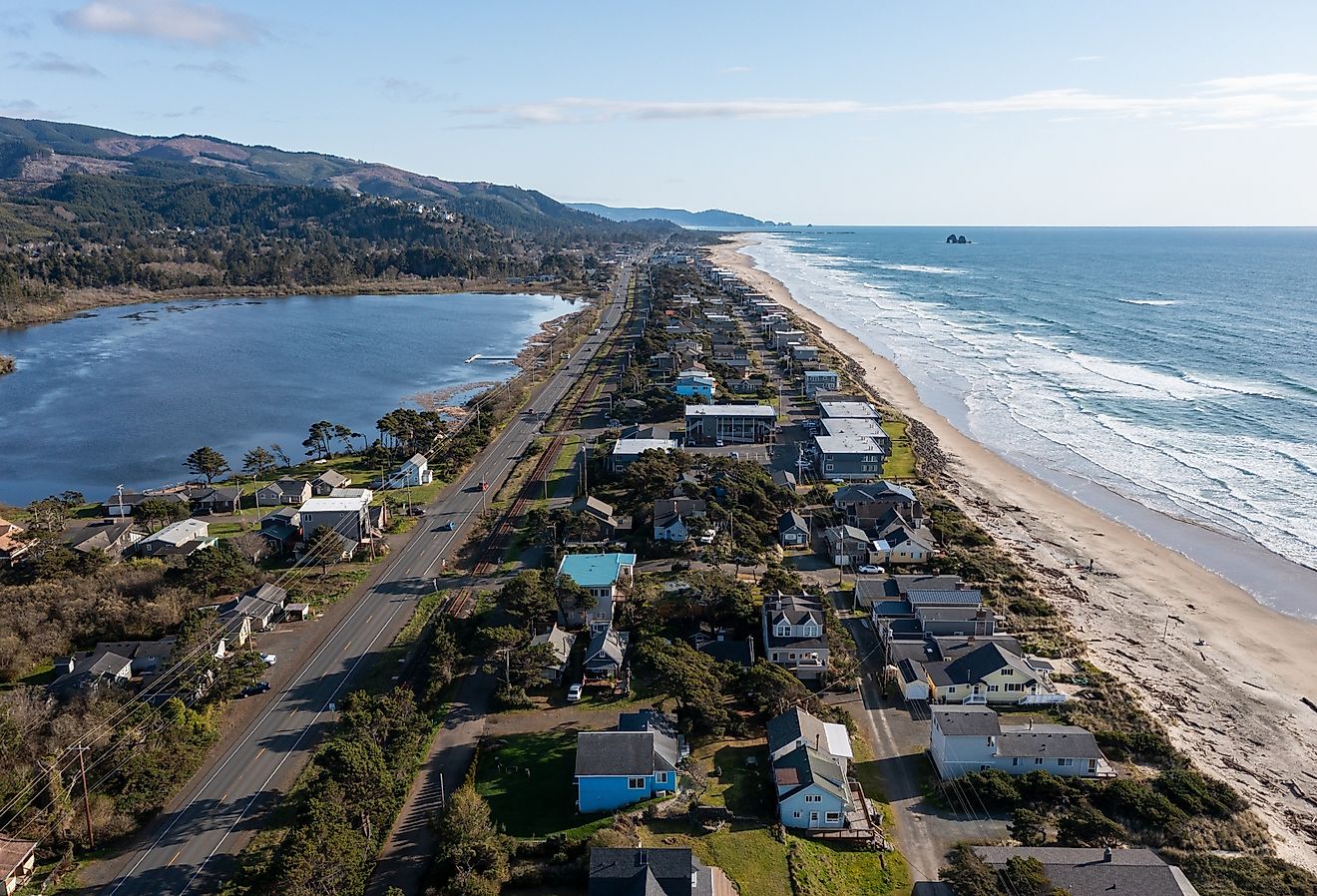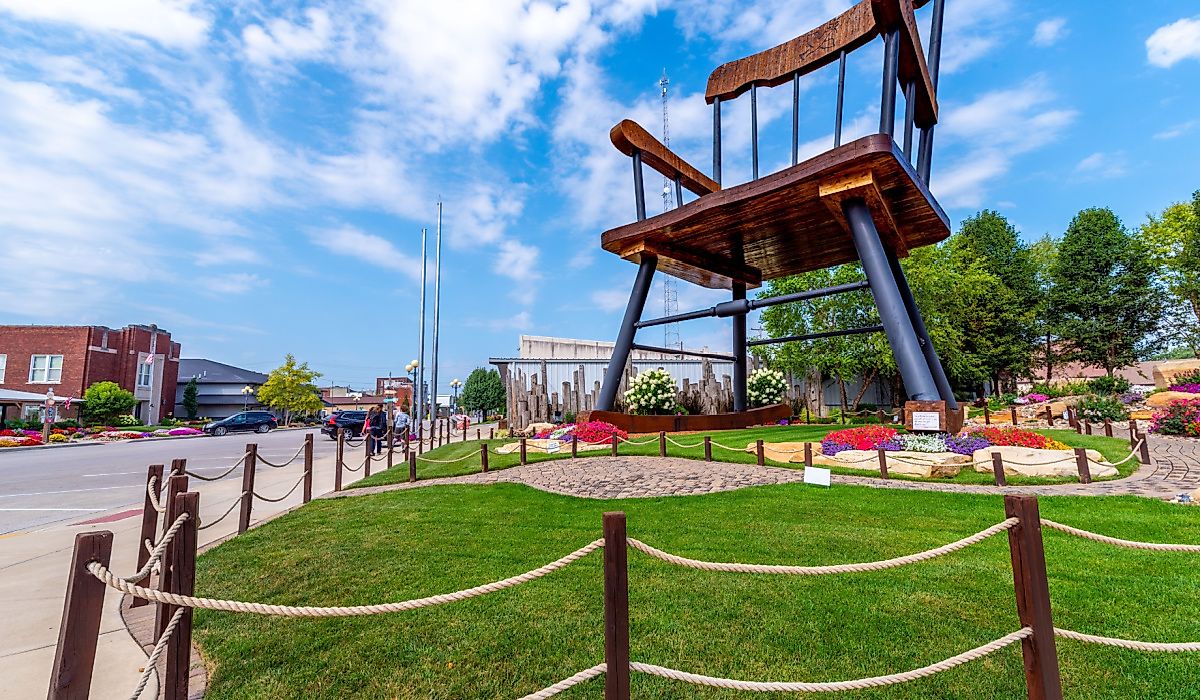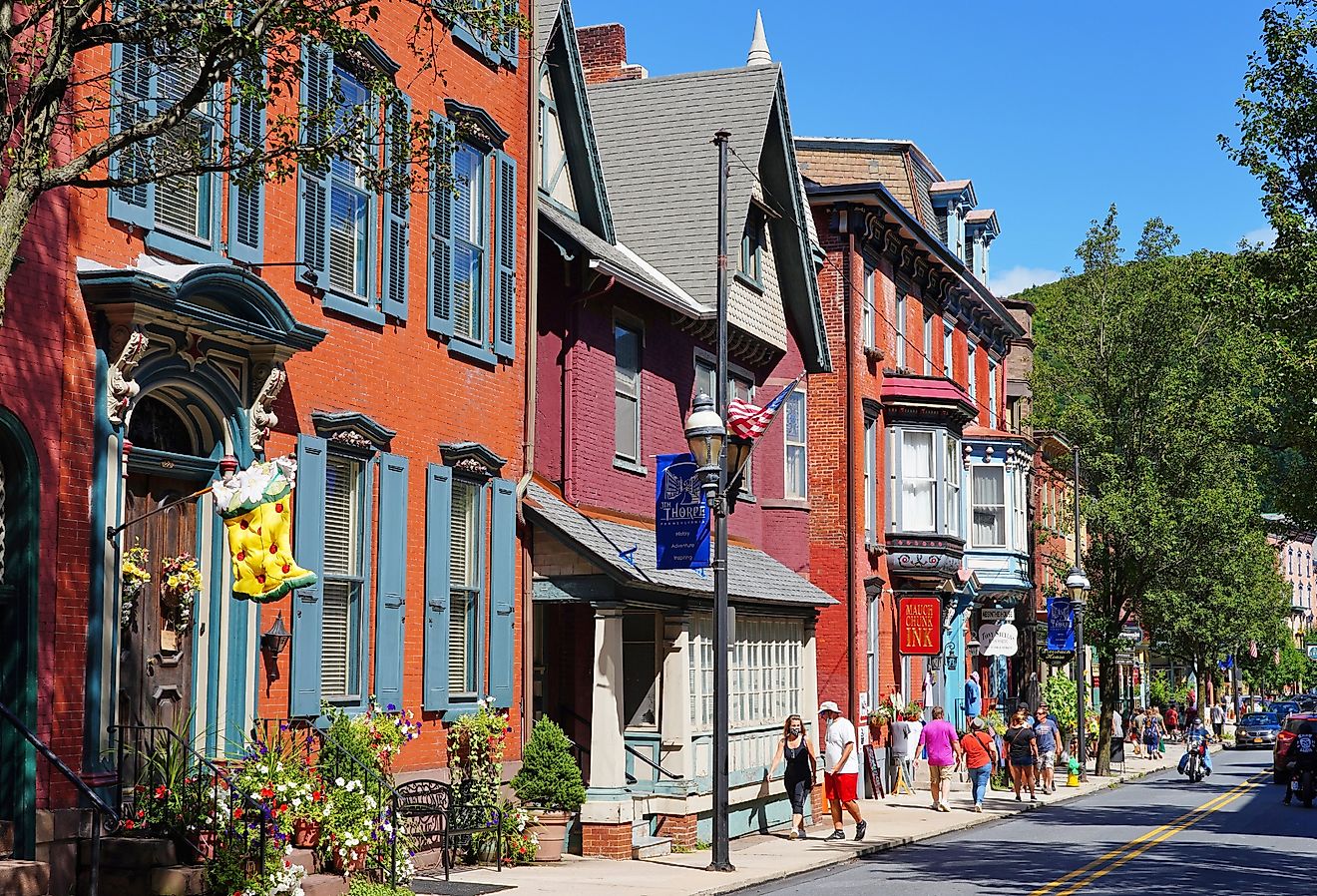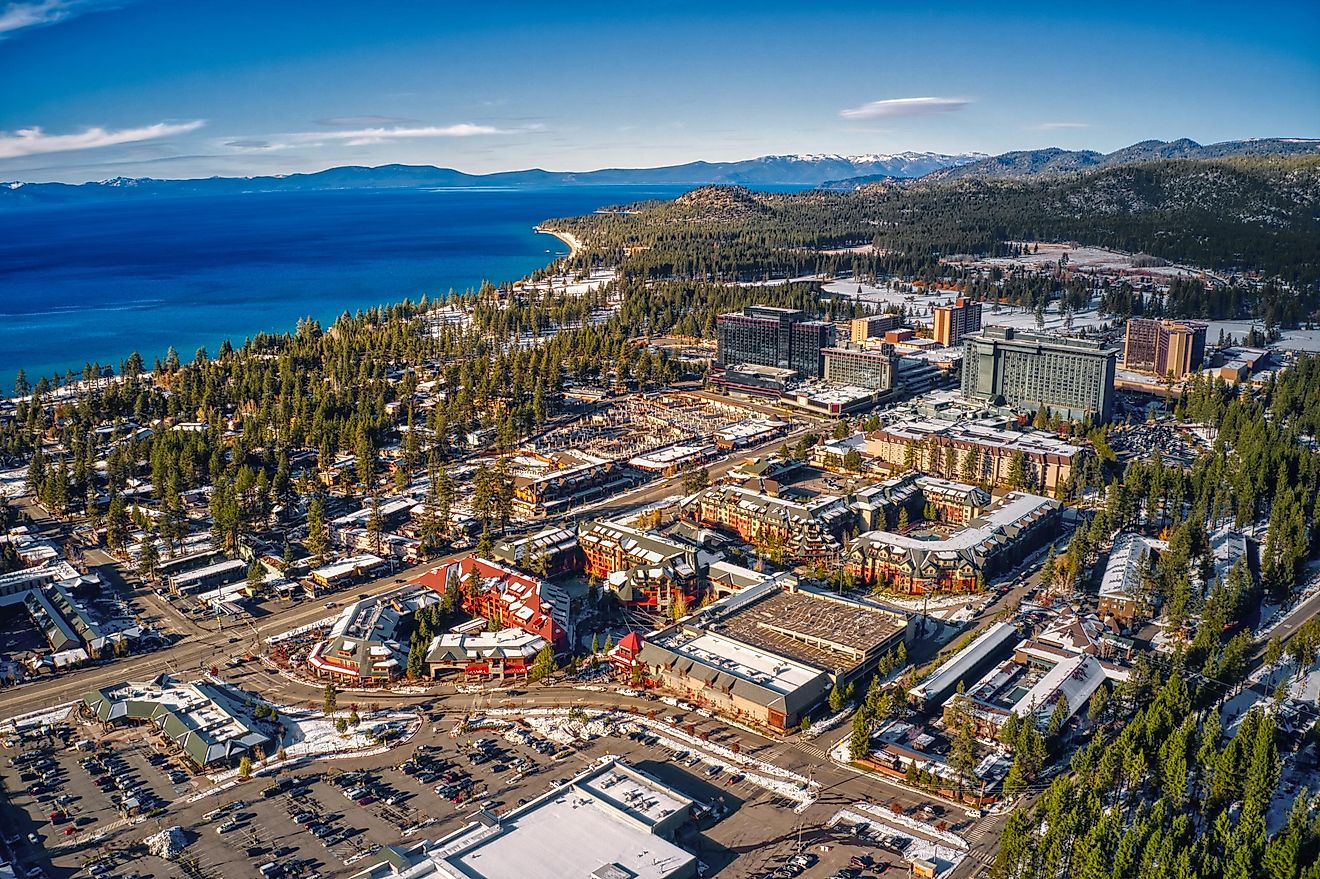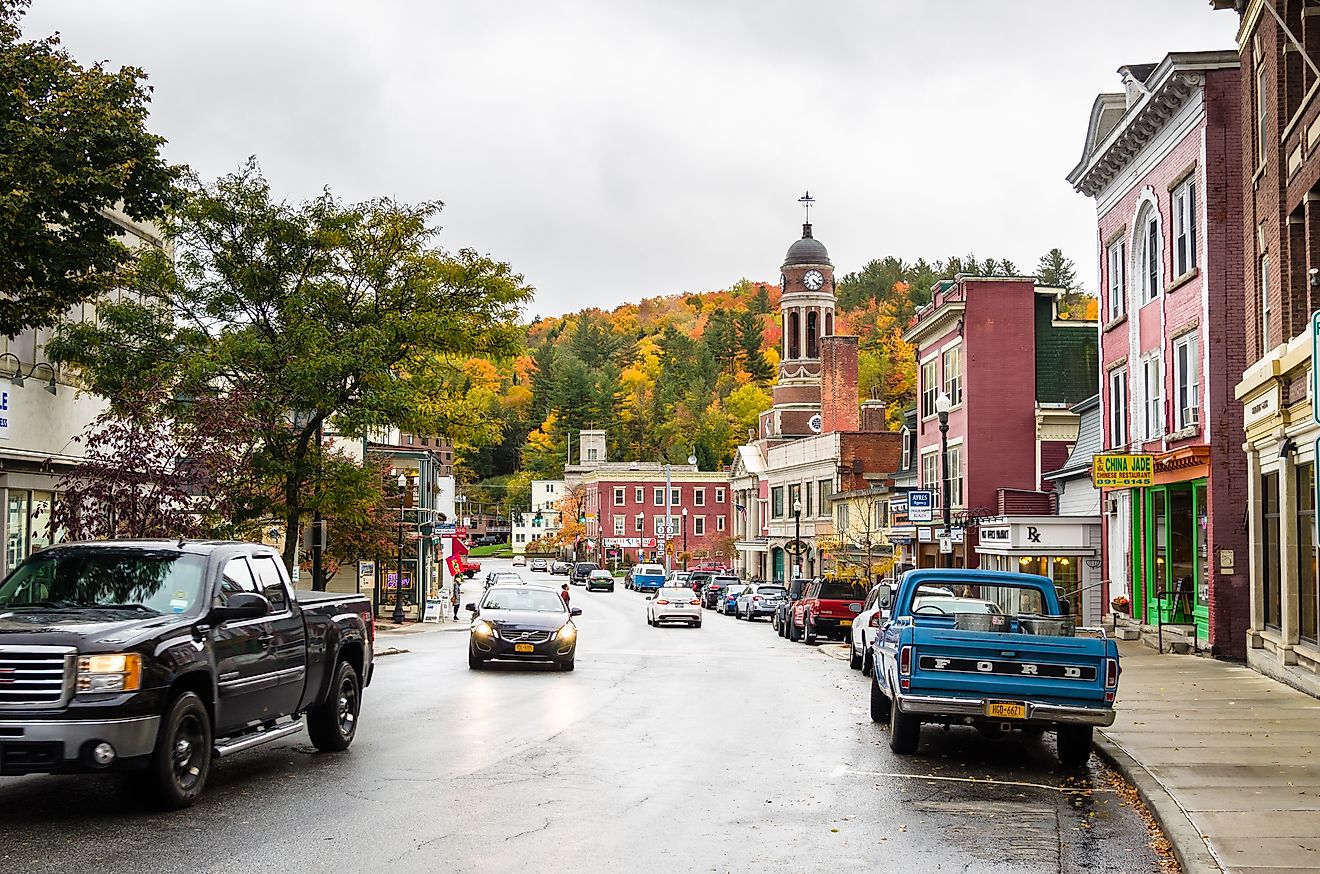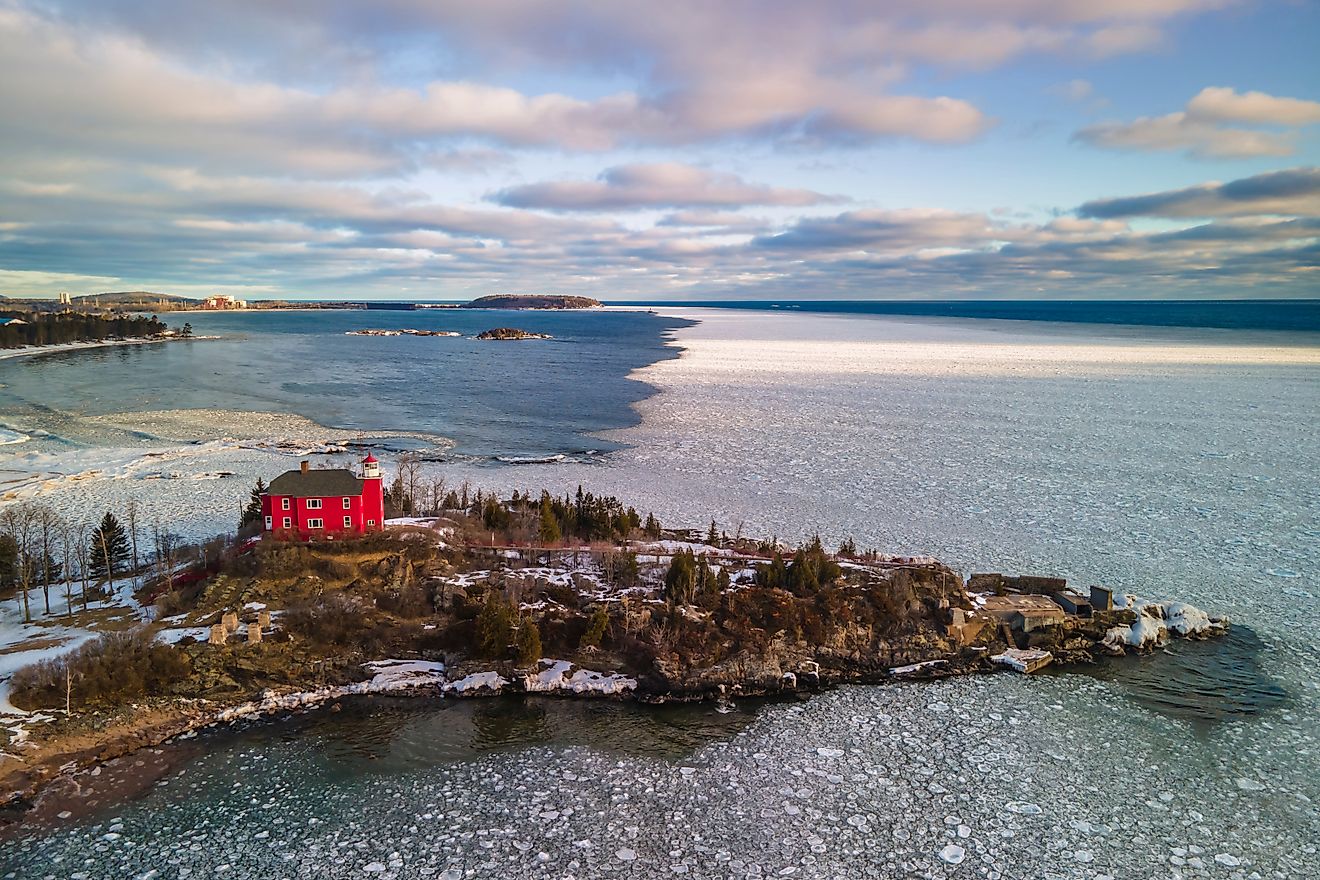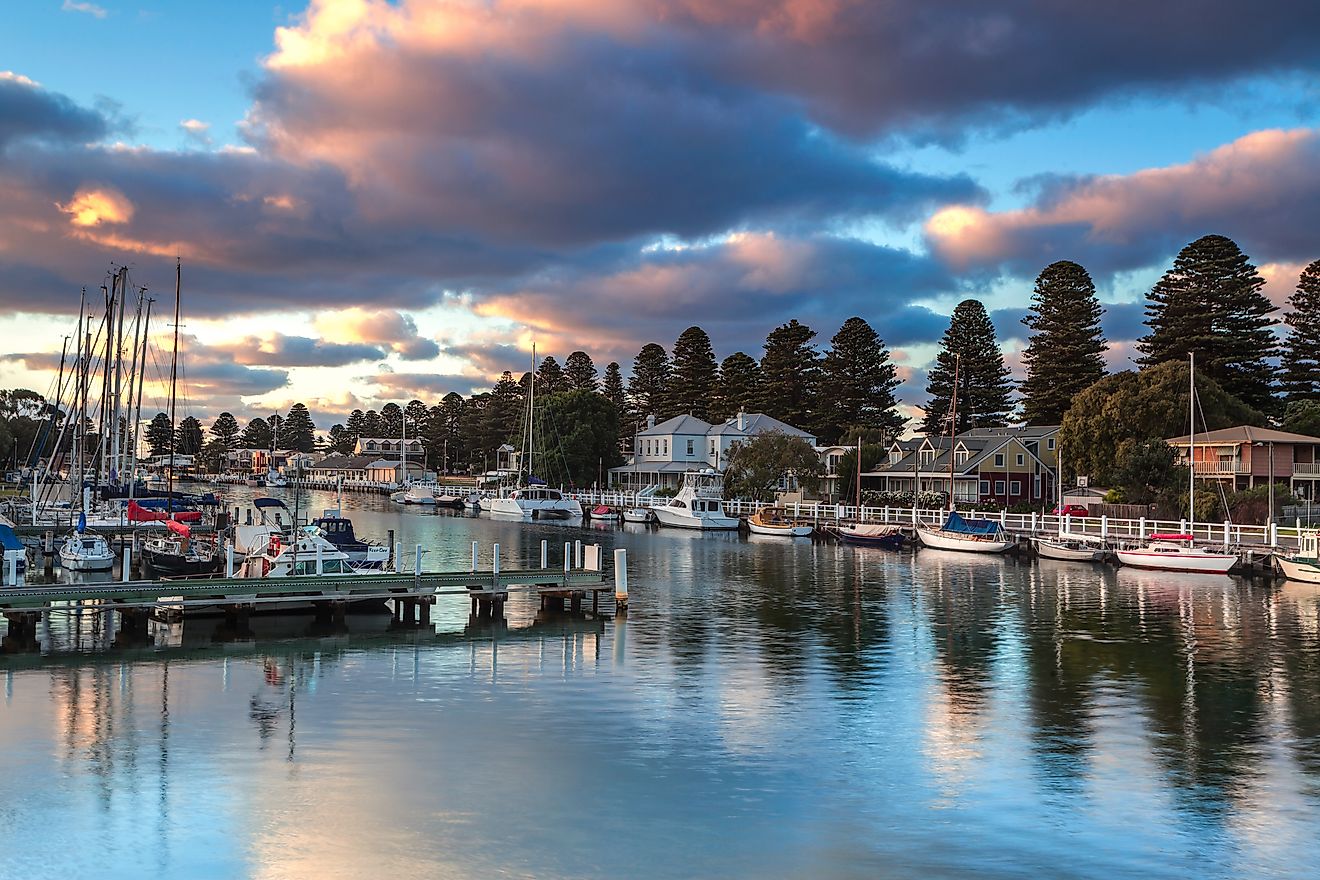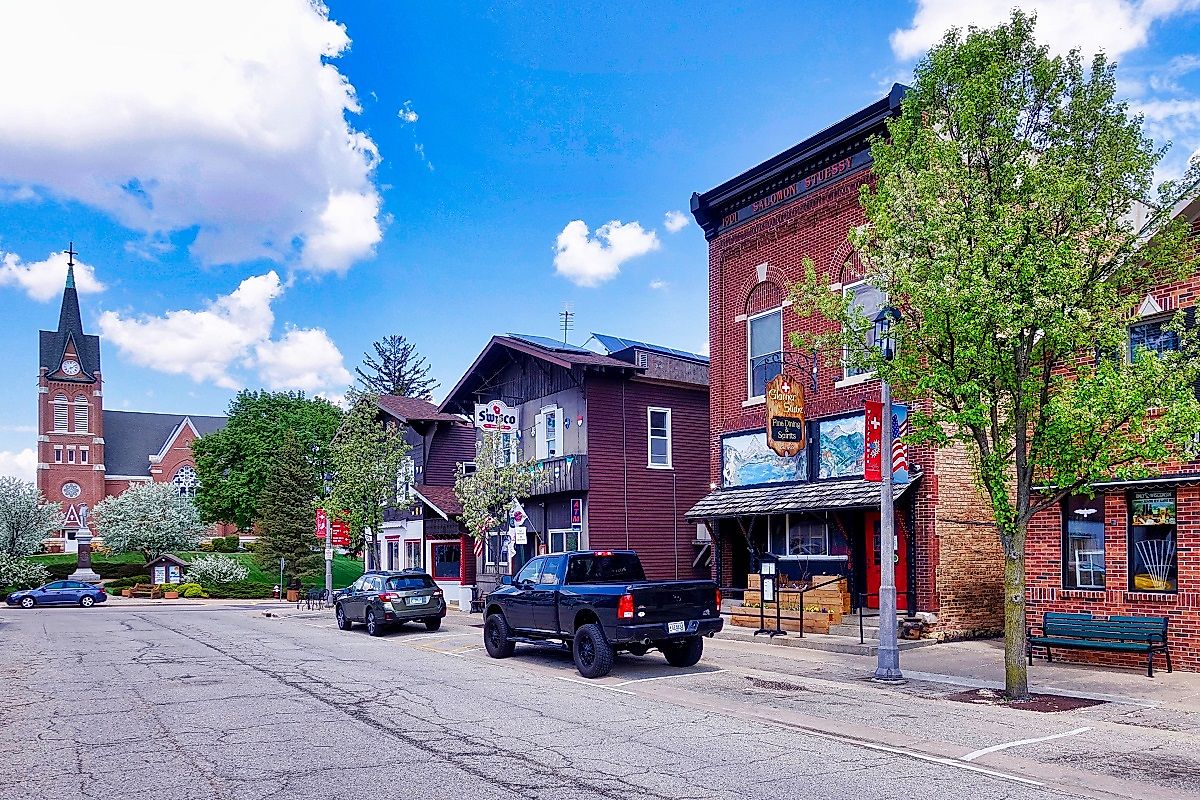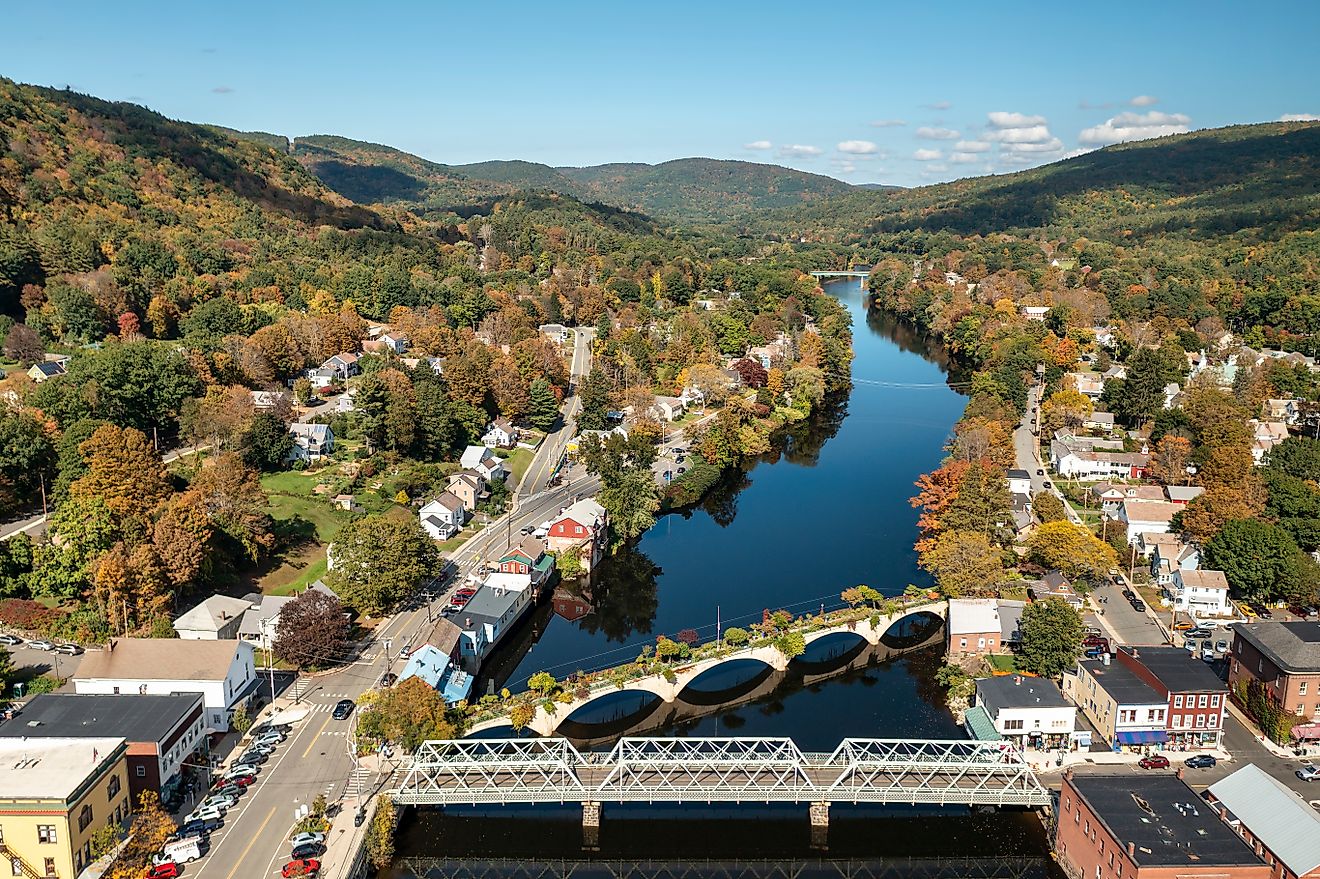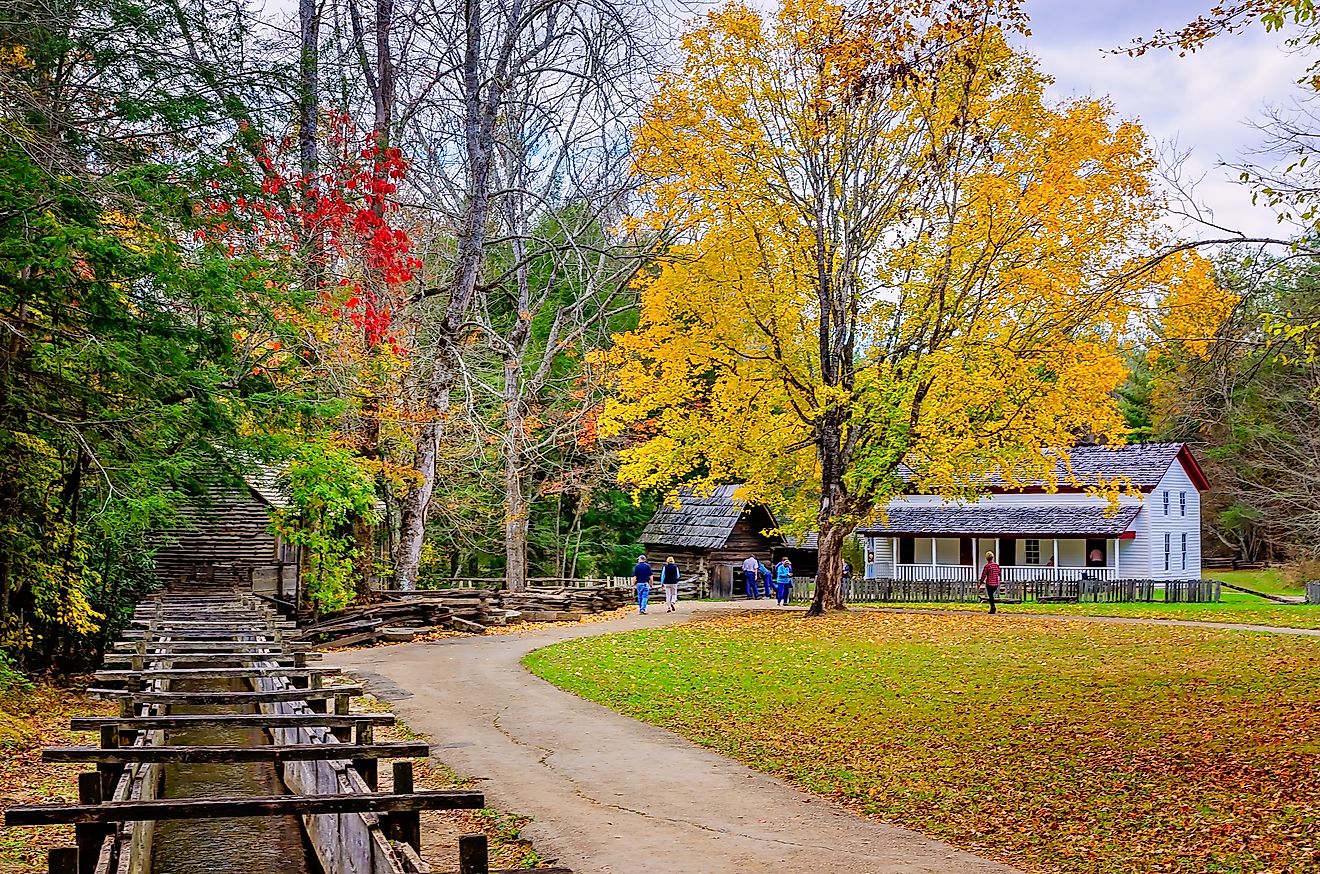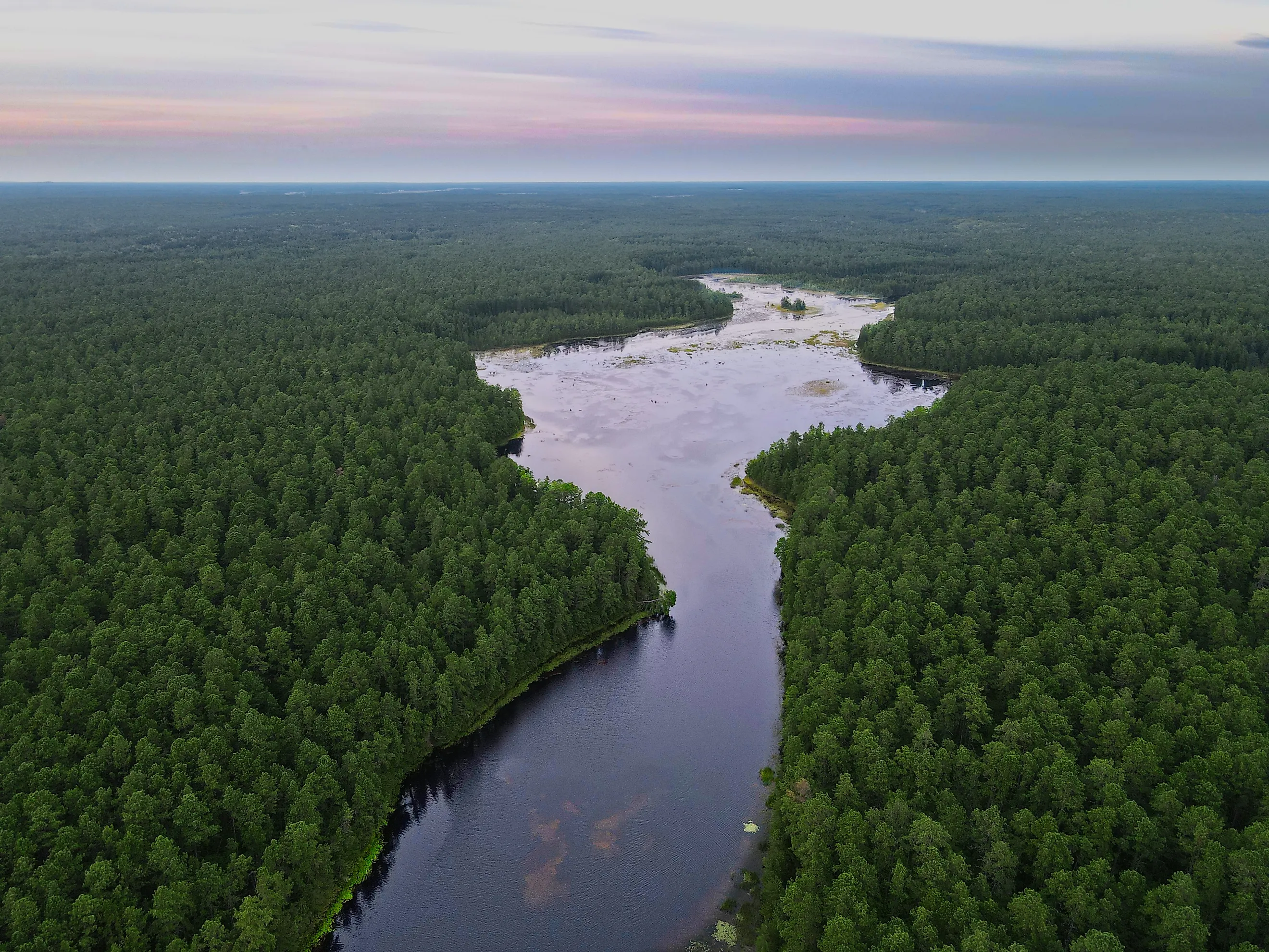
7 Best Natural Wonders To Visit In New Jersey This Year
When most people think of New Jersey, they picture bustling highways, boardwalks, or views of Manhattan across the Hudson. But tucked between its cities and shorelines lies a state rich with natural marvels that often go unnoticed. From roaring waterfalls that fueled America’s earliest industries to million-acre forests where blueberries and cranberries still grow wild, New Jersey’s landscapes tell stories as dramatic as their views.
This year is the perfect time to discover them. Whether you’re drawn to the thrill of climbing rugged cliffs, the serenity of glacial lakes, or the quiet beauty of wetlands alive with migrating birds, these seven destinations reveal a side of the Garden State that feels worlds away from crowded suburbs and shore towns. Each place offers not only breathtaking scenery but also deep ties to history, geology, and wildlife — making them experiences that linger long after your visit.
Paterson Great Falls
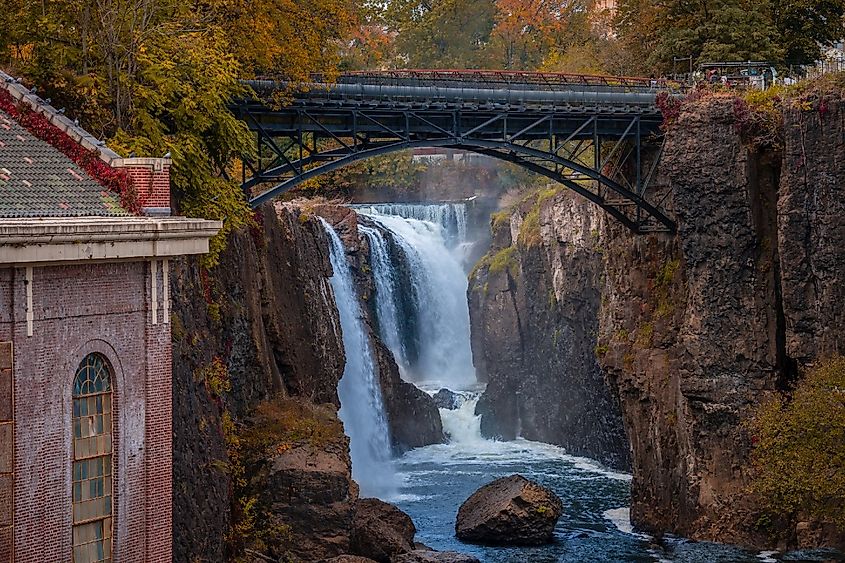
One of the most dramatic sights in New Jersey, the Great Falls of the Passaic River thunder 77 feet into a rocky gorge, making them the second-largest waterfall by volume east of the Mississippi after Niagara. Their sheer power not only shaped the landscape but also the nation’s history: inspired by the falls, Alexander Hamilton envisioned Paterson as America’s first planned industrial city, using water to fuel mills that spun silk, cotton, and other goods.
Today, the falls are the centerpiece of Paterson Great Falls National Historical Park, one of the newer units of the National Park Service. Open for self-guided tours and outdoor exploration, the park highlights both the natural beauty of the cascades and the rich legacy of the surrounding Historic District. Recognized as a National Natural Landmark and a National Historic Landmark District, the site preserves not only the falls but also the ingenious raceway and power systems that once drove early American industry.
Visitors can walk scenic overlooks, trace the history of the city that became known as “The Cradle of American Industry,” and reflect on how these rushing waters changed the course of a nation.
Best time to visit: The park is open daily from sunrise to sunset. Spring through early fall brings lush greenery and easy walking conditions, while autumn colors create a spectacular backdrop. After heavy rains, the falls surge with even greater force, offering an unforgettable display. Winter adds its own magic, as ice forms along the cliffs and mist hangs in the cold air.
The Palisades
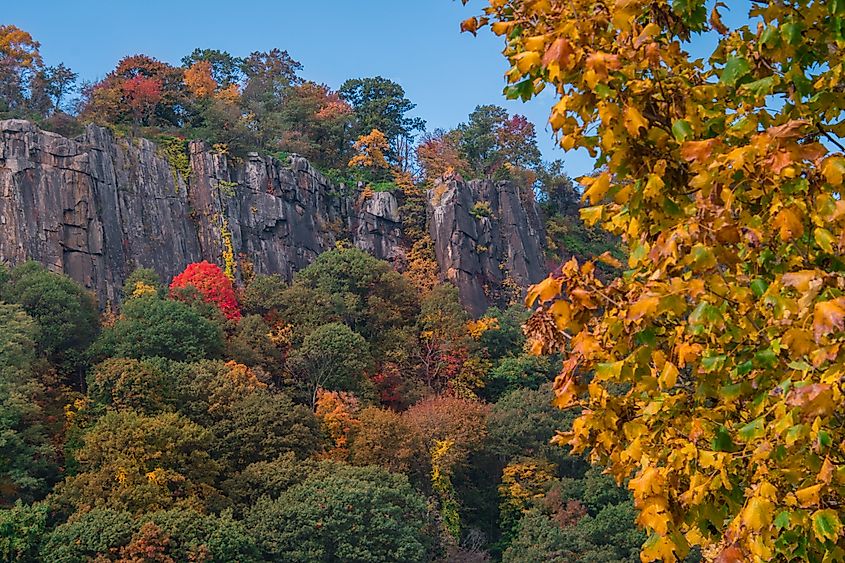
Stretching dramatically along the west bank of the Hudson River, the Palisades are towering diabase (similar to basalt) cliffs that rise 200 to over 500 feet above the water. Formed more than 200 million years ago, these sheer rock walls are a geological wonder — recognized as both a National Historic Landmark and a National Natural Landmark.
Just minutes from Manhattan, the Palisades Interstate Park in Bergen County spans 12 miles of rugged shoreline and wooded uplands. Within its 2,500 acres, visitors will discover more than 30 miles of hiking and cross-country ski trails, peaceful picnic groves, a riverside drive, two boat basins, and scenic overlooks that provide unforgettable views of the Hudson. For those craving a challenge, the Giant Stairs trail delivers a thrilling scramble over massive boulders, while the Nyack-Haverstraw River Trails offer a gentler path for walking, jogging, or cycling.
The cliffs aren’t only about outdoor fun — they’re also a living museum of Earth’s ancient history. Once part of the supercontinent Pangaea, the Palisades formed through slow-cooling lava flows that created their striking vertical columns. Today, they serve as a natural divide between the Hudson River and the Hackensack River basin, and their ridgeline runs nearly 40 miles, reaching as far as Staten Island.
Best time to visit: Spring and autumn are the most rewarding seasons to visit, with crisp weather and vibrant foliage. Summer brings lush greenery and plenty of opportunities for boating or riverside strolls, while fall’s fiery colors make the scenic drive along the cliff-top parkway unforgettable.
Delaware Water Gap
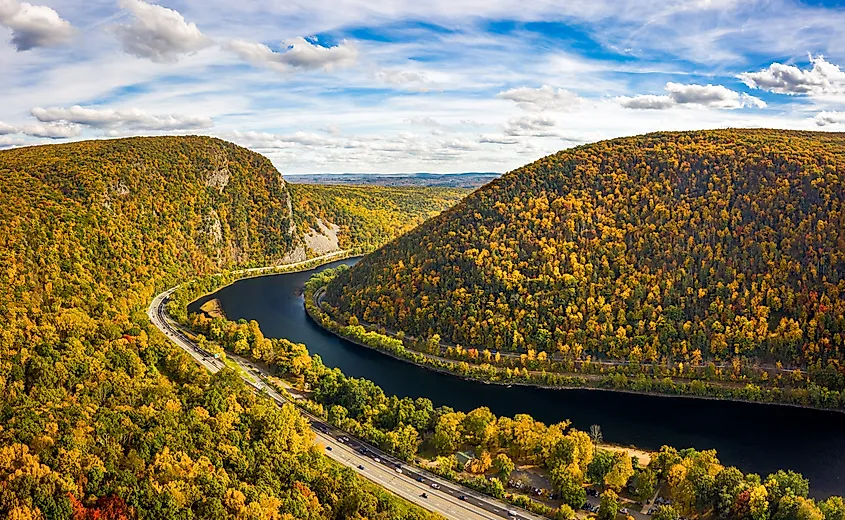
Nestled where New Jersey meets Pennsylvania, the Delaware Water Gap is one of the East Coast’s most inviting escapes into nature. Spanning nearly 70,000 acres, this park protects 40 miles of the Delaware River as it winds through the Appalachian Mountains, offering a rare stretch of free-flowing water east of the Mississippi.
The recreation area is a paradise for outdoor enthusiasts. Visitors can paddle along the river, hike wooded ridges to discover sweeping views, or cool off at hidden waterfalls and swimming spots. Biking the scenic McDade Recreational Trail, casting a line for trout, camping under the stars, or skiing nearby slopes in winter — there’s an activity for every season. Wildlife watchers will find bald eagles, black bears, and countless bird species throughout the forests and valleys.
Beyond the natural beauty, the nearby town of Delaware Water Gap adds a dose of charm to any visit. Stroll Main Street to enjoy hearty meals at The Sycamore Grille, homemade pies from the Village Farmer and Bakery, or old-fashioned sundaes at a turn-of-the-century ice cream parlor. Music lovers can catch live jazz at the historic Deer Head Inn, while those seeking a taste of the region’s resort past can stay at the grand Shawnee Inn and Golf Resort.
Best time to visit: Spring and autumn are ideal for hiking and sightseeing, thanks to mild weather and fiery foliage. Summer brings canoeing, kayaking, and river beaches to life, though crowds can be heavier. In winter, Shawnee Mountain transforms into a snowy playground for skiing, snowboarding, and tubing. No matter when you go, the Delaware Water Gap delivers both adventure and tranquility.
Wharton State Forest
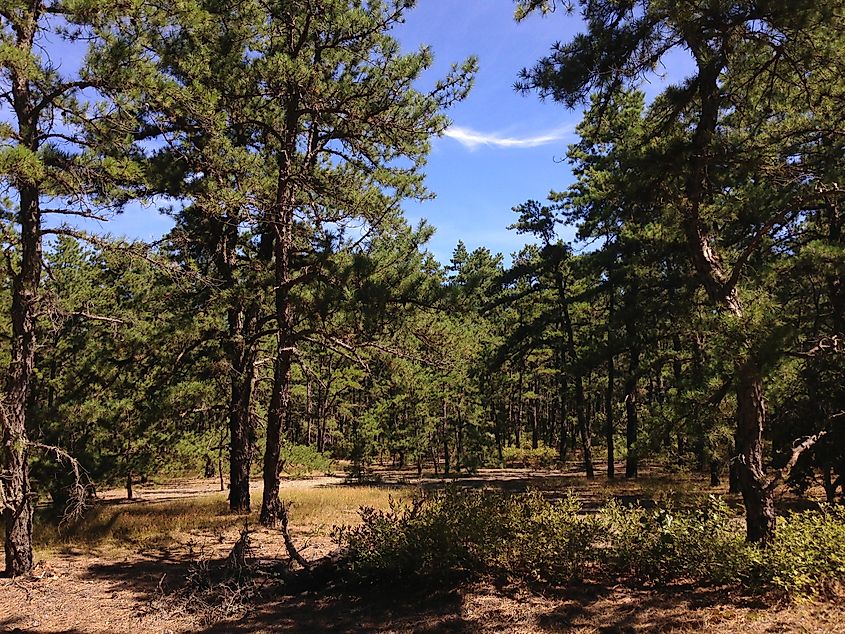
Covering more than 120,000 acres, Wharton State Forest is the largest protected area in New Jersey’s park system and a true gateway into the famed Pine Barrens. At its heart lies Batsto Village, a preserved 18th- and 19th-century settlement once known for its ironworks and glassmaking industries. Today, visitors can wander through the historic buildings on self-guided tours and catch a glimpse of what life was like in a bustling rural community nearly two centuries ago.
Beyond its history, Wharton offers endless opportunities for outdoor adventure. Winding rivers invite paddlers and kayakers, while miles of trails — including part of the long-distance Batona Trail — lead hikers and bikers deep into pine forests and wetlands. Birdwatchers will be rewarded with sightings of bald eagles, ospreys, herons, owls, and countless songbirds, while lucky visitors may also spot beavers, river otters, or deer.
The forest is also home to Atsion Lake, where summer travelers can swim, picnic, or camp near the sandy shoreline. For those staying overnight, campsites with fire rings, picnic tables, and nearby restrooms make the forest a comfortable base for exploration. Visitors will also find interpretive centers, picnic areas, horseback riding trails, and even cross-country skiing routes in winter, ensuring year-round adventure.
Best time to visit: Each season brings its own appeal — summer is best for swimming at Atsion Lake, spring offers blueberry picking and fresh blooms, autumn showcases brilliant foliage for camping and hiking, and winter provides crisp air and quiet trails. With its blend of history, wildlife, and outdoor recreation, Wharton State Forest is one of New Jersey’s most rewarding escapes.
New Jersey Pinelands National Reserve
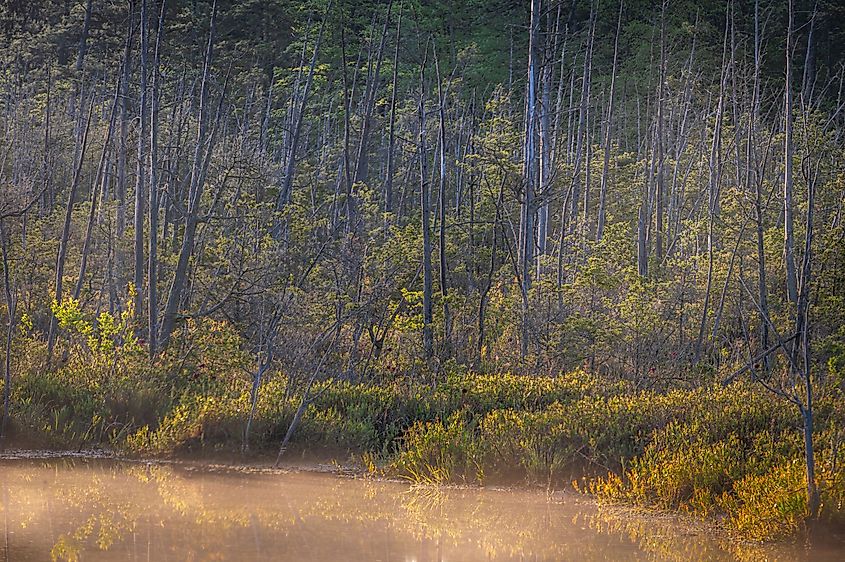
Sprawling across more than a million acres in southern New Jersey, the Pinelands National Reserve — often called the Pine Barrens — is a remarkable blend of wilderness, history, and tradition. Encompassing nearly a quarter of the state and parts of seven counties, this region features vast forests, winding rivers, hidden ponds, blueberry fields, and centuries-old cranberry bogs. It’s also home to rare plants and animals found nowhere else in the world.
Easily reached from major cities like Philadelphia, New York, and Baltimore, the Pinelands make an ideal getaway for both quick day trips and longer stays. Begin your journey at the Candace McKee Ashmun Education Center in Pemberton, which provides a great introduction to the area’s ecology and heritage.
For hikers, the crown jewel is the Batona Trail (“Back to Nature”), a 52-mile path linking Brendan T. Byrne State Forest in the north with Bass River State Forest in the south. Along the way, adventurers encounter ghost towns, abandoned rail lines, shifting sand dunes, and the unique landscapes that define the pines. Shorter loops and nature trails are scattered throughout, catering to every skill level.
Camping is a beloved tradition here. Wharton State Forest offers rustic campsites tucked deep into the woods, while Bass River State Forest provides more developed options with restrooms, showers, and easy access to the outdoors. Visitors can also canoe the tea-colored rivers, fish the quiet lakes, or join seasonal programs that highlight the cultural history of the region.
Best time to visit: Autumn is the most enchanting time to visit, when mild temperatures pair with brilliant colors and cranberry harvests. Guided tours during this season give visitors a behind-the-scenes look at the farming traditions that have shaped the Pinelands for generations. But no matter when you arrive, the Pine Barrens deliver endless opportunities for hiking, camping, and exploring one of New Jersey’s most treasured natural landscapes.
Great Swamp National Wildlife Refuge
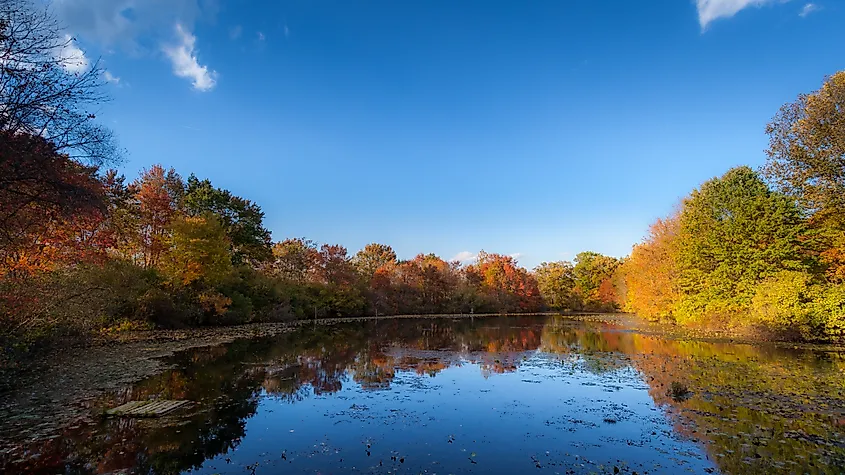
Tucked away in Morris and Somerset Counties, just 25 miles from New York City, the Great Swamp watershed covers about 35,000 acres and touches portions of 10 different towns, according to the Great Swamp Watershed Association. Nearly a quarter of this watershed is protected as the Great Swamp National Wildlife Refuge, ensuring its wetlands, forests, and meadows remain a sanctuary for both wildlife and visitors. The refuge itself spans 7,800 acres and is one of New Jersey’s most peaceful natural escapes, feeling worlds apart from the bustling suburbs that surround it.
The swamp’s story is as fascinating as its scenery. Carved during the last Ice Age when retreating glaciers left behind a massive natural basin, the swamp has been shaped for thousands of years by shifting landscapes and flowing waters. Today, it provides vital habitat for migratory birds, amphibians, and mammals, while also serving as a quiet refuge for people seeking time in nature.
At the Helen Fenske Visitor Center, guests can explore exhibits that highlight the swamp’s ecosystems and history, browse the volunteer-run nature shop, or wander the surrounding gardens filled with native plants that attract birds and butterflies. Families will enjoy trails designed for discovery: the Bockoven Trail leads to views of a vernal pool and the Passaic River, while the Nature Detective Trail encourages children to use their senses to uncover the swamp’s hidden wonders.
Best time to visit: Each season brings a new personality to the Great Swamp. Spring and fall are prime for birdwatching as migrating flocks pass through. Summer offers lush trails and opportunities to spot amphibians, while winter transforms the refuge into a peaceful snowshoeing destination where cold-weather birds can be seen against the snowy backdrop.
Worthington State Forest
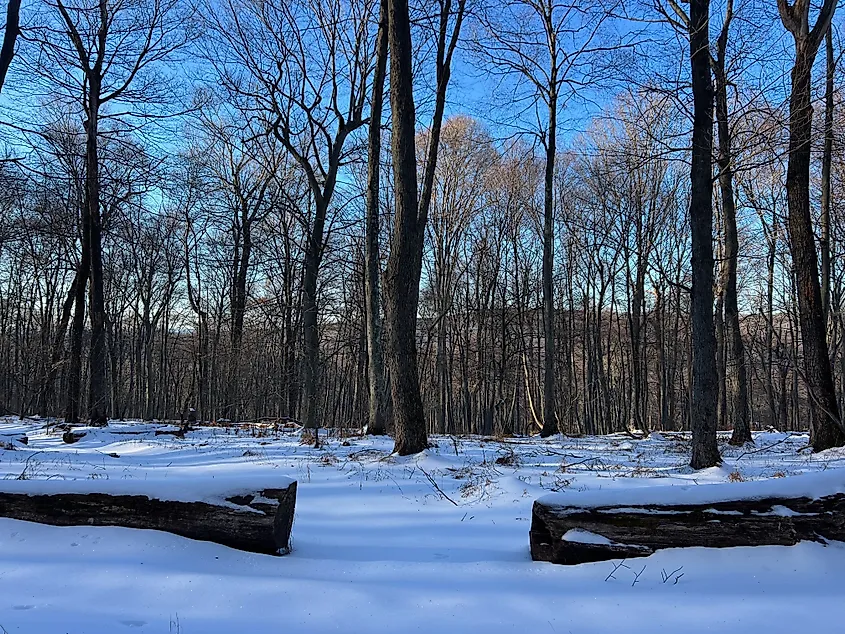
For hikers seeking dramatic scenery and rugged trails, Worthington State Forest is one of northern New Jersey’s crown jewels. Stretching along the Delaware River at the edge of the Delaware Water Gap, the forest combines steep climbs, glacial lakes, and panoramic lookouts that make every step worthwhile.
One of the park’s highlights is the challenging ascent up Mount Tammany. At 1,527 feet, its summit rewards visitors with breathtaking views of the Water Gap and the Delaware River snaking below. Another favorite destination is Sunfish Pond, a pristine glacial lake carved thousands of years ago during the last ice age. A trail loops around the pond, offering quiet spots to rest on boulders or take in reflections of sky and forest across the water.
The famous Appalachian Trail runs directly through Worthington, climbing the Kittatinny Ridge before continuing north toward Stokes State Forest and High Point. Hikers will find more than 26 miles of blazed paths here, from creekside walks along Dunnfield Creek to strenuous ridge-top scrambles. For history lovers, Old Mine Road — one of the oldest routes in the region — skirts the forest, once used by Indigenous peoples, Dutch settlers, and fur traders.
Worthington isn’t just for hikers. Campers can pitch a tent near the river, anglers can fish its streams and lakes, and paddlers can launch canoes or boats from designated access points. Picnic groves, a visitor center, and interpretive areas round out the experience.
Best time to visit: Spring and autumn are the most rewarding times to explore, with cooler weather and dazzling foliage. Summer draws more visitors but offers warm days for paddling or camping along the river. With its mix of history, natural wonders, and challenging trails, Worthington State Forest is a year-round haven for outdoor enthusiasts.
Exploring New Jersey’s natural wonders is more than sightseeing — it’s a reminder of how much beauty and history exists right in our backyard. At Paterson Great Falls, you stand where industry first found its power; along the Palisades, you trace cliffs born of ancient lava flows; in the Pinelands, you walk landscapes that cover nearly a quarter of the state yet feel untouched by time.
Taken together, these places form a living mosaic: waterfalls, forests, rivers, cliffs, and swamps that prove New Jersey is far more than its stereotypes. Whether you spend an afternoon hiking to a mountaintop view, a weekend camping in the pines, or a morning birdwatching in the wetlands, you’ll find yourself surprised at just how wild the Garden State can be. This year, skip the obvious and let New Jersey’s natural side leave you with stories worth telling.
